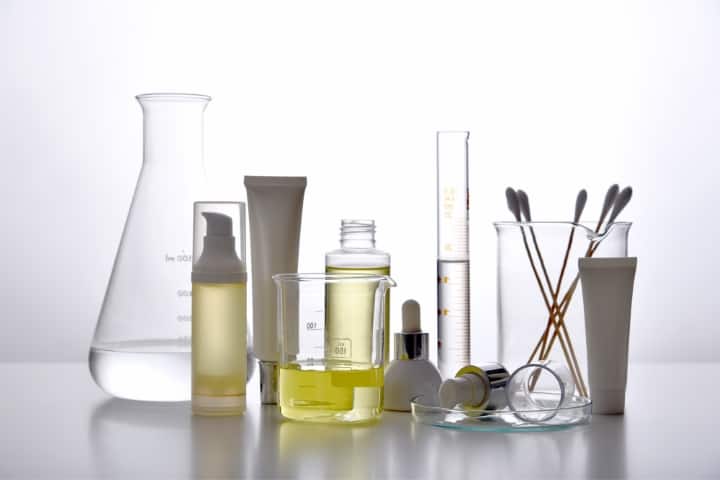Debunking the Myth Behind Scary Sounding Ingredients
The internet can be overwhelming and knowing the difference between myths and truths when it comes to skincare can be tricky. Dermatologists and Estheticians can give you the best knowledge as skin gurus and we encourage you to seek their advice when it comes to your specialized skin needs or concerns. Here are a few ingredients that we are ready to debunk with help from Susannah, advanced practice aesthetician.
Petrolatum. “Isn’t that Vaseline®? That’s pore-clogging!” The bad rep of petrolatum is that it’s cheap and pore-clogging/greasy. While that might be true for industrial use, highly refined and purified petrolatum can be beneficially used in cosmetics and skincare to give skin added moisture with minimal risk of irritation. Susannah adds, “In fact, many dermatologists turn to petrolatum as the first defense against eczema, psoriasis and even diaper rash.” This emollient is a great way to create a gentle barrier to keep hydration locked in and soothe this skin. It also adds a silky texture to skincare products.
Hyaluronic Acid might have you thinking corrosive and harsh, but this ingredient is far from it! Found naturally in skin, this replenishing ingredient has the ability to boost your skin’s moisture content and prevent moisture loss. By adding moisture, wrinkles look plumped and skin is firm and smooth. In addition, this skin-loving ingredient pairs wonderfully with other ingredients in many skincare formulations.
Cetyl Alcohol. This ingredient might conjure up images of stinging alcohol on a cotton round for cuts and scrapes, but this ingredient is far from the harsher and more well-known isopropyl alcohol. This fatty alcohol is a mixture of gentle cetyl and stearyl alcohols. It’s used as an emulsifier, emollient and texture enhancer in skincare products. Even cosmetics labeled “alcohol-free” can contain cetyl alcohol, which demonstrates the gentle and soothing effect of this ingredient over more well-known and skin aggravating forms of alcohol.
Dimethicone is a type of silicone that is highly gentle and effective. Do you ever wonder why your makeup looks much better after you moisturize? Dimethicone helps to smooth and blur imperfections leaving a smooth canvas for foundation. It can be the difference between a silky-smooth face cream and a tacky texture you can’t wait to wash off.
Parabens have generated a lot of buzz recently with products proclaiming “paraben-free” or “preservative-free” on their label, but why? Some studies suggest a link to cancer. Susannah notes, “however, these studies are typically based on extreme amounts of the preservative (up to 100% when less than 1% is typically used in cosmetics). I mean, if you drink a gallon of vodka you might die…but a perfectly proportioned cocktail can be delightful!”
Parabens protect our skincare products by inhibiting the growth of bacteria, ensuring they remain safe and effective. The risk of NOT using parabens or preservatives would be an overabundance of microbial growth and bacteria causing your products to expire and lose effectiveness very quickly. If you choose to use products that don’t contain parabens, that’s a personal decision—but know that parabens are among the safest and most-researched ingredients to preserve the makeup and skincare products we love.
Journal of Exposure Science and Environmental Epidemiology, May 2017, pages 320–325
Annual Review of Food Science Technology, February 2017, pages 371–390
Journal of Agricultural Food Chemistry, June 2008, pages 4631–4636
International Journal of Toxicology, July 2008, pages 1–82
The Journal of Allergy and Clinical Immunology, April 2016, pages 1,091-1,102
Journal of Drugs in Dermatology, May 2011, pages 531-537
Contact Dermatitis, June 2006, pages 338-343
Acta Dermato-Venereology, November-December 2000, issue 6, pages 412-415
Applied Occupational and Environmental Hygiene, November 2003, pages 890-901
Journal of the American Academy of Dermatology, March 1992, issue 3 part 2, pages 387-396
FDA Labeling Claims, 2014 http://www.cosmeticsinfo.org/ingredient/cetyl-alcohol
